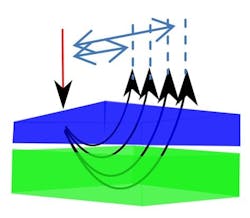Rather than simply list a bunch of equipment introductions, I am presenting a smaller number of technologies (hardware and software) applicable to PAT/QbD. The format will be mini-interviews and will touch on the highlights of each instrument/program. Since I have some (professional) personal favorites, I am going “Oprah” in this feature.
1. Endress+Hauser: TrustSens Temperature Sensor
Why is temperature important for process control?
Temperature is often a critical control point (CCP) in pharma, related to product quality, batch yield and cell viability. Without adequate temperature measurement, processes may not run at optimum, putting batches at risk and resulting in lost/recalled product.
What considerations face pharma production in calibration of temperature sensors?
The primary consideration is frequency of calibration. Batch-wise calibration gives unacceptable downtime and lost production. Long periods between calibrations risk producing OOS product. This sensor manages the balance between extremes (See Figure 1).
What is the benefit of a “self-calibrating” temperature sensor?
It provides a solution to frequency as a traceable, self-calibrating temperature sensor. In SIP batch processes, it performs a calibration without removing the sensor or measuring offline. Calibrating each cycle validates the performance of sensors without off-line manual calibrations. It compares the calibrated measurement to pre-defined tolerances, notifying the owner if the measurement is within tolerance. This allows identification of errors between calibrations - before they result in product losses.
Explain temperature sensor self-calibration.
It uses a material that undergoes a ferromagnetic state change at a specific temperature. Via a thin-film RTD sensor, this change is detected and compared with the RTD temperature measurement, providing data via LED or a signal if it is out of tolerance. It calibrates each SIP cycle, adjusts the output, storing 350 date/time-stamped calibrations and generating calibration reports.
2. INDATECH: UV, NIR, Raman Process Analysis Equipment
Where is the primary focus in the process stream?
Their primary focus is monitoring processed materials: tablets, capsules, lyophilized cakes, as well as selected processes. The equipment uses Visible, NIR or Raman with multiple fiber probes, utilizing a modified “Push-Broom” technology.
What is measured and how quickly?
Not only the API and moisture are measured, but numerous physical parameters. For example, illuminating a tablet at one point and measuring the emitted light at various distances (Figure 2), the hardness/density may be measured which, in turn, may be correlated with dissolution profile. In addition, capsules (on an inverted belt, allowing even measurements) can be measured for API and percent fill. Vials, liquid-filled or lyophilized cake, can be measured for API, additives and moisture. Multiple fibers (at the side of the vial) allows the full “cake” to be measured, even when removed from the base.
Any other points along a process?
The multiple fiber optics heads allow the system to follow materials in hoppers, FBDs and so forth. It is able to use Vis/NIR/Raman, whichever is best suited for the multi-variate analysis, rapidly and in real-time, using proprietary (Part 11 compliant) software.
3. Metrohm: Instant Raman Analyzer M3
What is the MIRA M3 and why is it special?
The Metrohm Instant Raman Analyzer M3 (Figure 3) is the newest handheld Raman analyzer on the market, fully compliant with 21 CFR Part 11, designed for raw material identification (RMID) in Pharma.
Besides its small size, what are some other distinguishing features?
It has a barcode scanner that activates data collection and uses “Smart Tip” technology to ensure traceability. It runs on two standard Lithium ion or rechargeable AA batteries, ensuring portability. At 1.6 pounds, it is made of billet aluminum, is IP67 rated, and is designed for continuous warehouse operation.
How was it designed with the industry in mind?
The unit was designed for CFR compliance and simplicity. Many handheld Raman analyzers have these features in opposition. Using a “method-based” Raman approach, QA creates a precise, fixed, traceable workflow for the instrument, documenting what it is doing and how measurements are made for review by a regulatory agency. Scanning the barcode, it initiates a workflow from which the analyst cannot deviate.
Can you give more detail on Method-Based Raman?
A “method” encompasses all the parameters of an analysis: controlling the sample name and data collected, display location, scan length, energy used and sampling accessory. It controls these by either an onboard PCA or hit-quality index (HQI) from a library.
What sampling accessories are available?
There is a vial holder, tablet holder, and short and long focal-length lenses. Each is software identified, aiding traceability. With “Orbital Raster Scan” and method control, dyes and samples in colored bags are easily obtained.
4. Tune Engineering: iRisk QRM Software
iRISK is a software suite combining all necessary QRM (quality risk management) tools into one integrated platform, managing risk throughout the product lifecycle. It identifies, quantifies and prioritizes risks, formulating RM strategies and aligns the business processes with regulatory expectations (FDA, EMA, GMP-Annex 15 and ICH guidelines). It was engineered by a team comprised of QRM experts, IT engineers and pharmaceutical veterans.
How does one apply the software?
It bridges geographical boundaries, connecting various QRM teams, worldwide, e.g., a QRM professional in Germany wants to know more about U.S. risk perception. He logs onto iRisk, gleaning information about RM prevalent there. This enables him/her to gather information, giving a platform for knowledge-sharing. Ideas and information are exchanged through this platform, building a solid RM framework. Basically, knowledge management is the key to iRisk.
